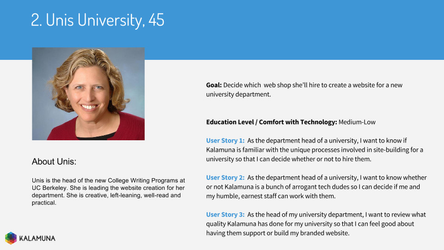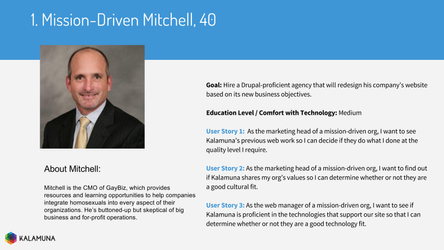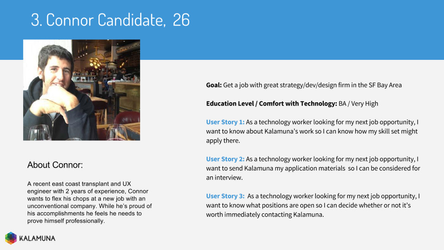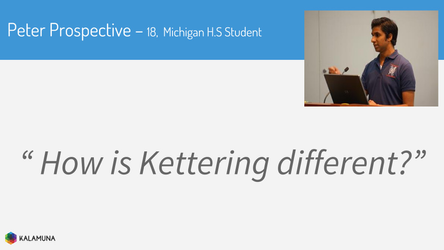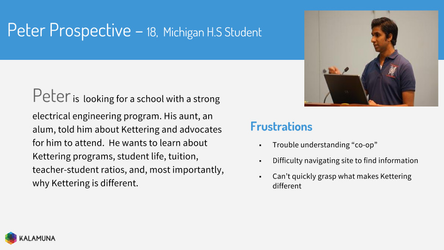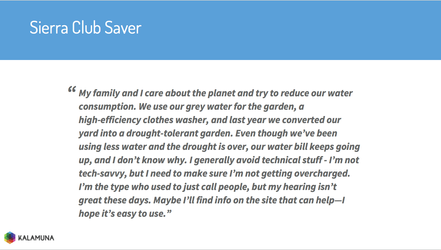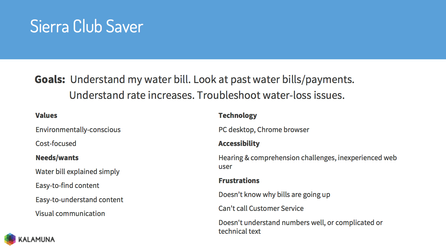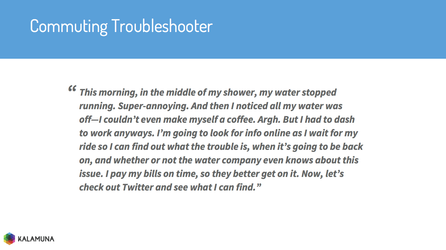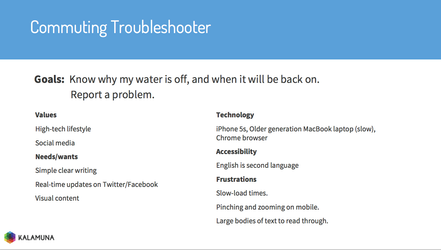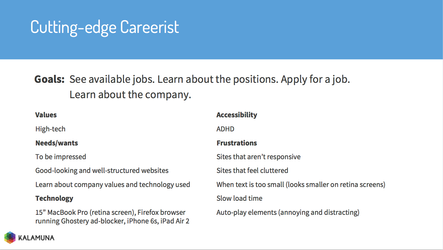Personas
Definition
A Persona is a fictional person representing users with similar needs, created by synthesizing research findings, that drives design and development throughout a project.
Creating Personas of merit
Personas should seek to combine the most important attributes of your users into as few fleshed out characters as possible.
Names that employ alliteration are more approachable and memorable: Stuart Student, Tabitha Teacher, etc.
Examples
Persona Scenarios
Persona scenarios are crafted using a behavioral goal-based approach (rather than overtly demographic-focus) to help eliminate unconscious bias which can interfere with developing empathy. The scenarios help us relate to users and understand what kinds of tasks they need to do, and the contextual challenges they might be facing.
Guiding design, development, and content; persona scenarios help us understand what’s important so we can prioritize.
Creation of persona scenarios is based on user research and illustrates what is important to the users & also considers what is important to the client/org, and typically:
- Caters to the primary user types
- Focuses on the most popular content and interactions
- Ensures the website is accessible to the level needed by the client
- Keeps in mind client/org’s values
The persona scenarios, as well as the process of crafting them, informs and guides:
- User stories / story mapping (and site functionality)
- Information Architecture
- Content modeling and preparation
- General design direction
Persona Scenarios Generally Include:
- Name
- Scenario/Story
- User Goals specific to the scenario
- Values
- Needs/Wants
- Frustrations
- Accessibility
- Techology
Instructions:
Find a certain situation (scenario) and focus the scope on what goes through people's minds as they move toward a particular intent or purpose. Find user’s inner thinking, underlying reasoning, reactions, and guiding principles for specific contexts. Make them believable, relatable, and at least somewhat likable.
Start with goals for each scenario/situation based on most popular content, primary usertype activities, and/or other criteria gathered from stakeholder interviews and user research.
Incorporate:
- Specific contexts with goals
- Needs / wants / desires
- Challenges/frustrations
- Inner thinking, reasoning, reactions, personal values
- Likeable/relatable human elements
Craft the scenarios based on user research.
Separately state (callout) goals and considerations for each scenario.
Considerations can include:
- Disabilities or temporary challenges / Accessibility Considerations
- Poor vision
- Color blind
- Blind (screen readers)
- Attention/comprehension
- Poor memory
- ESL
- Motion sensitivity
- Mobility/dexterity (key-board only)
- Demographic information that can be baked into behaviours instead of overtly labeled.
- Devices / Technology
- iPhone
- Android phone
- iPad
- Desktop/Laptop
- Chrome (desktop/laptop)
- Values
- Needs/Wants
- Frustrations
Naming the personas:
- Do this last so it makes sense as a group.
- Based on behavior + characteristics.
- Must be something we’d be comfortable labeling ourselves with - and something we think will meld with our culture - and that of the client and users.
Type of feedback requested when reviewing persona scenarios:
- Are we missing any important goals or behaviors?
- Are there any details that are wrong, or aren’t believable?
Examples
Resources
photos for persona creation: http://pixabay.com/en/photos/?q=portrait&image_type=&cat=&order=
Notes and instructions of Persona Scenarios based on the Indi Young approach: https://medium.com/@indiyoung/describing-personas-af992e3fc527
